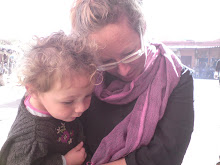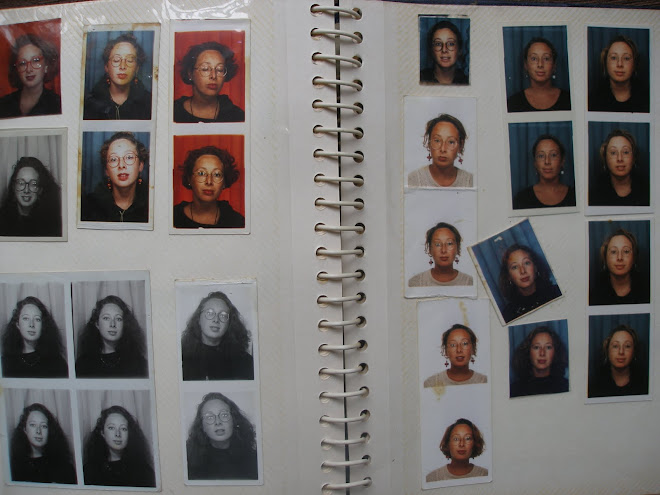
"There is no more sombre enemy of good art than the pram in the hall". This was written by Cyril Connolly, in Enemies of Promise, 1938. Connolly was a writer trying to understand the reasons for his own failure to produce a major work of literature despite being recognised at the time as a leading man of letters and a great critic.
What affects your ability to make work and to make 'great' work – that you value and that is recognised by yourself (and others?) as having something to contribute? Does this even matter to you?
Does being a mother relegate your work?
I went to an excellent free event at Fabrica Art Gallery a couple of weeks ago. It was a creative drawing extravaganza organised by a local artist Jane Fordham called Smudging and Scratching and Dancing in Coils, combining a contemporary dancer and four cine projectors loaded with found film from the 20s to the 60s.
I had been up in London the night before hanging out with my brother Fin and my dad. The reason for going up was a meeting at the Whitechapel Art Gallery called Enemies of Good Art. It turned out to be a very interesting gathering of over 40 mothers, most with babies or small children. We came together to explore our shared experiences of being artists as well as parents and how to manage the demands of both and enable ourselves to continue making creative work. We talked about the negative feelings towards the presence of children in the art world; in terms of their physical presence at art related events or in gallery spaces and as subject matter in the work of female artists.
I am particularly interested in these negative ideas towards children and mother artists as earlier on in my motherhood I realised somewhere along the line I had somehow managed to imbibe them quite successfully. Filled perhaps with my own internalised negative constructions of motherhood as being somehow less than, low status, undervalued by society etc. etc. (we know all this)... I was not about to embrace it as central to my art practice, either in process or as subject matter. So, I struggled to maintain a very rational and pragmatic approach to exploring my visual language and to focus on anything other than my pregnancy or soon after my brand new little Winifred sleeping by my side or staring up at me as I painted strong images of line and physical domestic space. I didn't want to fall into a stereotype, I didn't want to fulfill other people's negative ideas – but in my efforts to avoid all this – I was missing the point. And that is... about embracing the challenge, and being brave enough to be all of who I am and say what I want to say and decide how I want to say it - with the art that I make. And...to stop self censoring and second guessing how it might be received.
I find that sooo difficult. It is hard to be free...sometimes I associate freedom with naivete, and I don't think any of us can afford to be naïve. I studied Social Anthropology and it gave me a real education in culture and men and women. I remember so much poignant stuff about male and female relations in cultures across the world. One anthropologist, Sherry Ortner pointed out that, cross-culturally, woman is "identified with, or symbolically associated with, nature, as opposed to man, who is identified with culture". Ortner, argued that women are more closely identified with nature because of their bodies, specifically their sexual and reproductive bodies. This association explains why women's closeness to nature seems inevitably to become a mark of second-class citizenship, for while women create "only perishables--human beings," men create "relatively lasting, eternal, transcendent objects". This was what she found from looking at the place of women in society.
I will say more about this another time – because I have a lot to say about it and I find it fascinating in so many ways. But for the purposes of now, my received wisdom while studying anthropology was that across the world (past and present), there are examples, so, so many – of how women are relegated in one way or another in culture and society. I spent my late teens and early 20's therefore developing the idea that I was not going to let myself be associated with things that were being denigrated i.e. being a women (or a mother). Enough said. My ongoing challenge is to find ways of integrating all that is me – all of my selves regardless of society and other people's judgements. And, I am just about starting to do that in my work quite effectively! I think.
Back to the mothers meeting at the Whitechapel then (woops!). I was really interested in discussions about how to get studio space and how to develop both a national and local network of artists with children. I also like the idea that if we are going to make work – we should/ could do so with children in tow in public spaces, rather than hiding ourselves away and pretending that our children and our mothering identity are not crucial and relevant to who we are and what our work is about.
The drawing class back in Brighton, followed directly from the Whitechapel gathering and needless to say it felt great rocking up to Fabrica direct from London, with empty sketchbooks in hand and a bag full of drawing equipment. I sat on the floor in the darkness (among loads of other people of all ages and backgrounds) making marks fast, freely and joyfully. Turning over the pages quickly, putting down black onto white sheets, responding to the dancing body clothed all in white and the flickering projections of a 20's wedding, children on beaches and an elderly man and women standing uncomfortably looking into the lens, searching for the comfort in each others hands.
For more information about the Enemies of Good Art meeting contact:
martinamullaney@googlemail.com
I just found this interesting website have a look at www.whodoesshethinksheis.net/
























.jpg)









2 comments:
Well, well - difficult to comment. My thoughts initially were around the primacy of our oppression, primacy of gender, primacy of motherhood, primacy of capital - whichever has the greatest shackle? In the end it is about the search for freedom - 'its hard to be free'.To be free the spiritual, not the material must fly and art is a key - Good luck!
Perishable - I can't explain the irony of having just spent half an hour typing a response to this post only to have had it obliterated. I tried to sign out without first saving it to a document. I wanted to be clever - to leave my comment anonymously. You said surely I of all people should have known! That my previous, finely crafted, comment lay on this page like tissue! Perishable and blown away!
So away with a comment not on the whole but on a part, a streak through the cloud chamber....
Perishable! A human life. But is the comparison like with like? Surely the Le Viaduc de Millau stands as one thing to its architect as a little girl does to her daddy but not so to all the other travellers on the road. What of the commonplace and the extroardinary? Is a thing any less the latter for spanning decades or is the seeing through of centuaries a prize more cherished?
In whos eyes is the judgement to be made? Men, other women, other mums in some insane one up 'man' ship?
Can we group the ordinary; a baby, a blade of grass, a journey to work and compare and juxtapose with a storm on a summers day, a train strike that hands us a free day, a bouquet to a new mum?
I see other peoples babies. They seem to catch me with their gaze. They puncture the bubble of reality that would otherwise see me drowned.
I see also their mothers. Many look to me, comfortable. Occupied. With little pots of this or that and chat and magazines. Some I see with laptops and papers and hummous stained shirts. Is one path to be commended and the other shirked? What is it all for?
Post a Comment